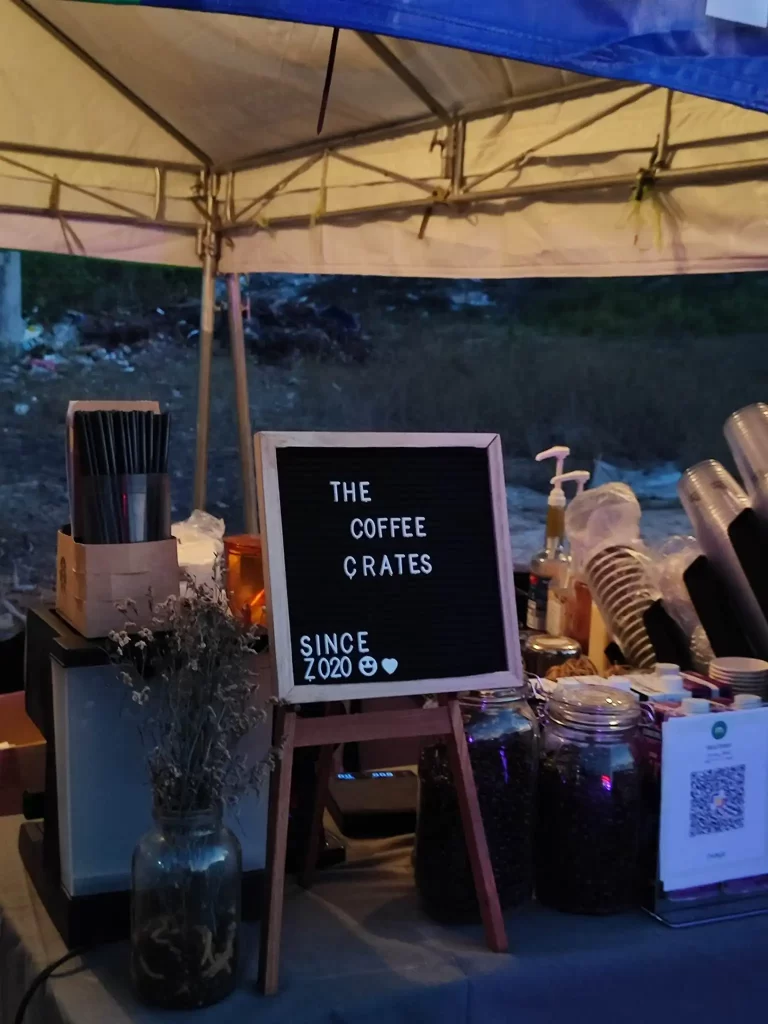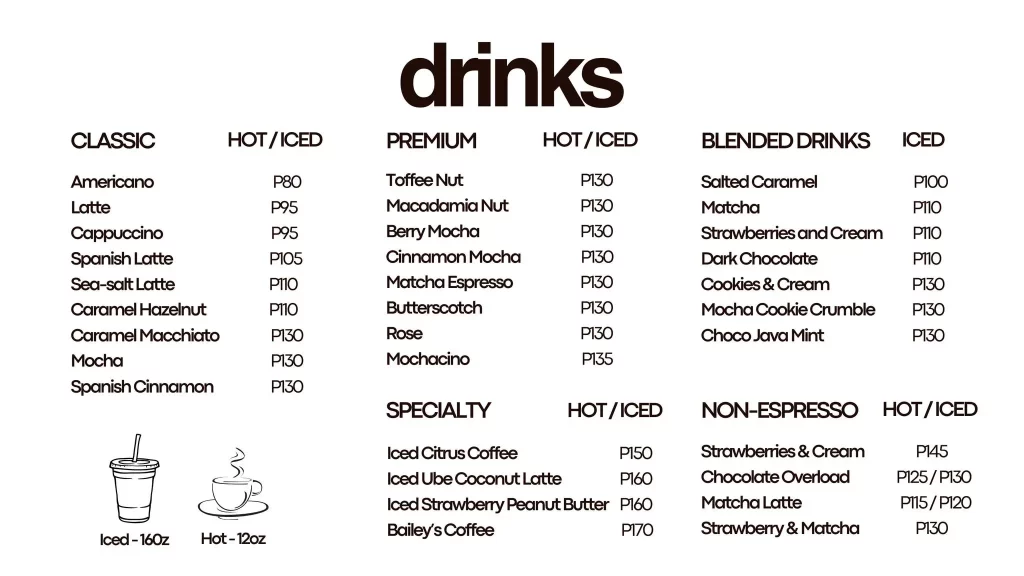With temperatures getting hotter and hotter in the Philippines, Filipinos are often looking for ways to escape the heat.
One increasingly popular solution? Cold brew coffee. This refreshing alternative to hot coffee has surged in demand, presenting an opportunity for entrepreneurs eager to explore the world of beverage businesses.
In this guide, we’ll share eight essential steps to help you kickstart your cold brew coffee business.
1. Determine how you will sell coffee
The first thing that comes into one’s mind for selling coffee is to put up a cafe. Starting a cafe requires significant capital investment and entails considerable risk. Beyond the charm of serving coffee in a cozy ambiance lies the reality of hefty initial expenditures. From securing a suitable location and acquiring commercial-grade equipment to hiring trained baristas and marketing your brand, the costs can quickly escalate.
Unlike before, you don’t need a brick-and-mortar store to sell cold-brew coffee. Coffee startups have expanded into several types to make it easier for beginners to start their cold-brew coffee business. You have the option to use a vehicle (coffee truck), sell via weekly pop-ups, or do a cloud cafe.
Coffee Truck or Coffee Jeep
Going mobile means you’ll have to spend for a customized truck or coffee jeep if you don’t have a readily available car. A cheaper option would be using second-hand or repossessed cars because it will lessen the initial expenses involved.
Pop-up Coffee Shop

A pop-up coffee shop offers versatility and affordability when launching a coffee business. Unlike traditional coffee shops, this type of store doesn’t have a fixed location. Instead, it operates in various areas with high foot traffic, such as fairs, festivals, and train and bus stations, providing ample opportunities for engagement with potential customers.
Cloud Kitchen
A cloud kitchen, also known as a “ghost kitchen” or “virtual kitchen,” is a professional cooking space where food businesses can make meals specifically for delivery and takeout. Unlike regular restaurants, cloud kitchens don’t have dine-in areas. Instead, they focus solely on preparing food to be delivered or picked up. In the Philippines, these kitchens often partner with GrabFood or Foodpanda.
2. Find a Location
However you want to sell your coffee, having a good business location is essential. So the next step is to scout for a location that will help your brand become more visible and accessible to buyers. Here are some considerations in selecting a location for your coffee business.
Heavy foot traffic
Whether you are putting up a traditional coffee shop or a coffee truck, you need a spot with high foot traffic to make your coffee accessible to buyers. Examples of high foot traffic areas are near public parks, markets, and community spaces. Target places where most people pass by.
Operating schedule
Match your operating schedule when most people look for coffee. People often buy coffee for a morning boost, which is at around 9 am. In the afternoon, between 1 pm and 5 pm, when cortisol levels naturally dip, you could expect more people dropping by into your cafe or coffee jeep.
Delivery services
If you decided to start a cloud kitchen, it would be easier to have a location because you can operate even in your place of residence. Despite this convenience, you also need to consider your proximity to your target customers. Shipping to places that would take 1 hour to 2 hours of delivery time might charge customers higher delivery fees and force them to wait longer. These factors typically discourage customers from placing an order.
3. Choose what type of coffee bean you will use
Arabica Beans
These beans, making up around 60% of the world’s coffee, grow in high areas with steady rain. They’re popular for their lively taste and acidity, sometimes with complex flavors and scents.
Robusta Beans
Second in popularity to Arabica, Robusta plants are tough and can grow in various altitudes, even lowlands like those in Southern Tagalog in the Philippines. They contain more caffeine than Arabica but offer a smooth taste, especially enjoyable with cream and sugar.
Liberica Beans
Also known as Kapeng Barako locally, Liberica is less common now but played a big role historically when coffee rust hit the industry. It has a strong, chocolaty, and smoky flavor, with spicy undertones that some might find overpowering.
Excelsa Beans
Only 7% of the world’s coffee is Excelsa, grown mostly in Southeast Asia, including the Philippines. Often used in blends for added complexity, Excelsa offers a tart and fruity flavor with hints of mild roast and smokiness, appealing to coffee lovers worldwide.
4. Decide your menu offerings

Espresso, steamed milk, and froth are the key ingredients in many coffee drinks, with various types available at your mobile shop. Additional toppings can be added based on your customers’ preferences. Here are some examples:
Espresso
A popular choice, requiring slightly over 1 ounce of concentrated coffee.
Double Espresso (Doppio)
A highly concentrated beverage suitable for coffee enthusiasts.
Americano
Made by diluting one shot of espresso with three ounces of hot water, often enjoyed as a breakfast beverage.
Macchiato
Espresso “marked” with a dash of steamed milk, creating a distinct flavor.
Cappuccino
A rich coffee beverage with thick foam, often enjoyed for breakfast and associated with comfort and indulgence.
Cafe Latte
A milder coffee drink with added milk to reduce acidity and bitterness, sometimes sweetened with flavored syrups.
Mocha
Combines coffee with hot chocolate, offering a creamy taste with the addition of cocoa powder or syrup to balance the espresso’s acidity.
5. Work on your branding
Starting a cold-brew coffee business requires careful consideration, especially in a saturated market. One crucial aspect is the design of your cold-brew coffee container, as it can significantly impact consumer choice. Factors such as color, shape, and lid closure should be thoughtfully considered to make your product stand out on the shelves.
Additionally, crafting an eye-catching logo and memorable tagline can help create brand recognition and attract customers. Ensuring consistency across all marketing materials is crucial for building brand identity. If the creative process feels overwhelming, seeking professional help for design and creative services can ensure a polished brand image.
6. Calculate your starting capital
The first 5 steps we mentioned are important because they will determine the initial amount of money you need to prepare to start a cold brew coffee business.
This entails estimating the initial expenses required to launch your business. Factors to consider include:
- Equipment costs (such as coffee brewing equipment, storage containers, and vehicles for mobile operations)
- Ingredient costs (coffee beans, milk, flavorings)
- Marketing expenses (branding, advertising, website development)
- Licensing and permits
- Utility costs
- Manpower costs
7. Build partnerships with trusted suppliers
Many coffee bean producers who are not yet popular in the market provide reasonably-priced high-quality beans. Once you’ve started your cold brew business, take time to join weekend markets because this is where you will most likely meet them. By establishing relationships with these suppliers, you can ensure a steady and consistent quality of beans at a lower cost.
8. Prepare to be a jack-of-all-trades
As a startup owner, you’ll need to wear many hats and handle various responsibilities, even before launching your product. This includes making decisions about your brand’s image and ensuring the quality of your products. From bottling your cold brew to getting it into the marketplace, there will be a lot to manage.
Your vision should include strategies for managing the company’s growth. Whether you’re starting small or aiming for expansion, it’s crucial to set clear goals from the outset.
Key Takeaway
The demand for cold brew coffee presents a promising opportunity for entrepreneurs, but success depends on thorough preparation and execution. By following the eight essential steps outlined in this guide, aspiring cold brew coffee business owners can launch their venture.
From determining the sales approach and selecting the right coffee beans to crafting a compelling menu and establishing a strong brand identity, each step plays a crucial role in laying the foundation for success. Additionally, calculating the starting capital and building partnerships with trusted suppliers are vital aspects that contribute to the business’s sustainability and growth.
As a startup owner, it’s essential to be prepared to handle multiple responsibilities and make informed decisions to ensure the business’s success. By staying organized, setting clear goals, and remaining adaptable to market trends and consumer preferences, entrepreneurs can position their cold brew coffee business for long-term viability and profitability.
